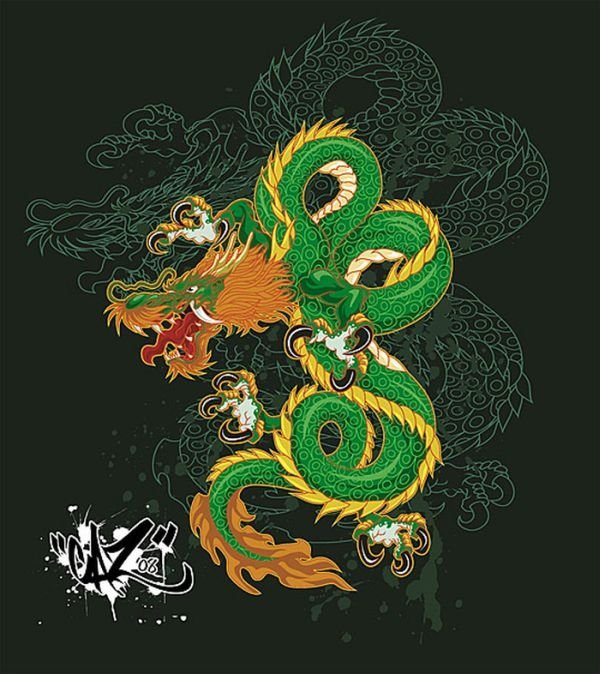|
|
Dragon Drawing
|
The association of the serpent with a monstrous opponent overcome by a heroic deity has its roots in the mythology of the Ancient Near East, including Canaanite (Hebrew, Ugaritic), Hittite and Mesopotamian. The Chaoskampf motif entered Greek mythology and ultimately Christian mythology, although the serpent motif may already be part of prehistoric Indo-European mythology as well, based on comparative evidence of Indic and Germanic material.
The "European dragon" (and its Near Eastern and Indic cognates) myth has quite different characteristics and origins from those of the Chinese dragon.
Dinosaur and mammalian fossils were occasionally mistaken for the bones of dragons and other mythological creature; for example, a discovery in 300 BC in Wucheng, Sichuan, China, was labeled as such by Chang Qu. Adrienne Mayor has written on the subject of fossils as the inspiration for myths in her book The First Fossil Hunters, and in an entry in the Encyclopedia of Geology she wrote: "Fossil remains generated a variety of geomyths speculating on the creatures' identity and cause of their destruction. Many ancient cultures, from China and India to Greece, America, and Australia, told tales of dragons, monsters, and giant heroes to account for fossils of animals they had never seen alive." In Australia, stories of such creatures may have referred to the land crocodiles, Quinkana sp., a terrestrial crocodile which grew from 5 to possibly 7 metres in length, or the 4 tonne monitor lizard Varanus priscus (formerly Megalania prisca) a giant, carnivorous goanna that might have grown to as long as 7 metres, and weighed up to 1,940 kilograms, or rainbow serpents (possibly Wonambi naracoortensis) that were part of the extinct megafauna of that continent..
In the book An Instinct for Dragons anthropologist David E. Jones suggests a hypothesis that humans just like monkeys have inherited instinctive reactions to snakes, large cats and birds of prey. Dragons have features that are combinations of these three. Our instinctive fear for these three would explain why dragons with similar features occur in stories from independent cultures on all continents. Other authors have suggested that especially under the influence of drugs or in dreams, this instinct may give raise to fantasies about dragons, snakes, spiders, etc., which would explain why these symbols are popular in drug culture. The traditional mainstream explanation to the folklore dragons does however not rely on human instinct, but on the assumption that fossil remains of dinosaurs gave rise to similar speculations all over the world.
|
|









